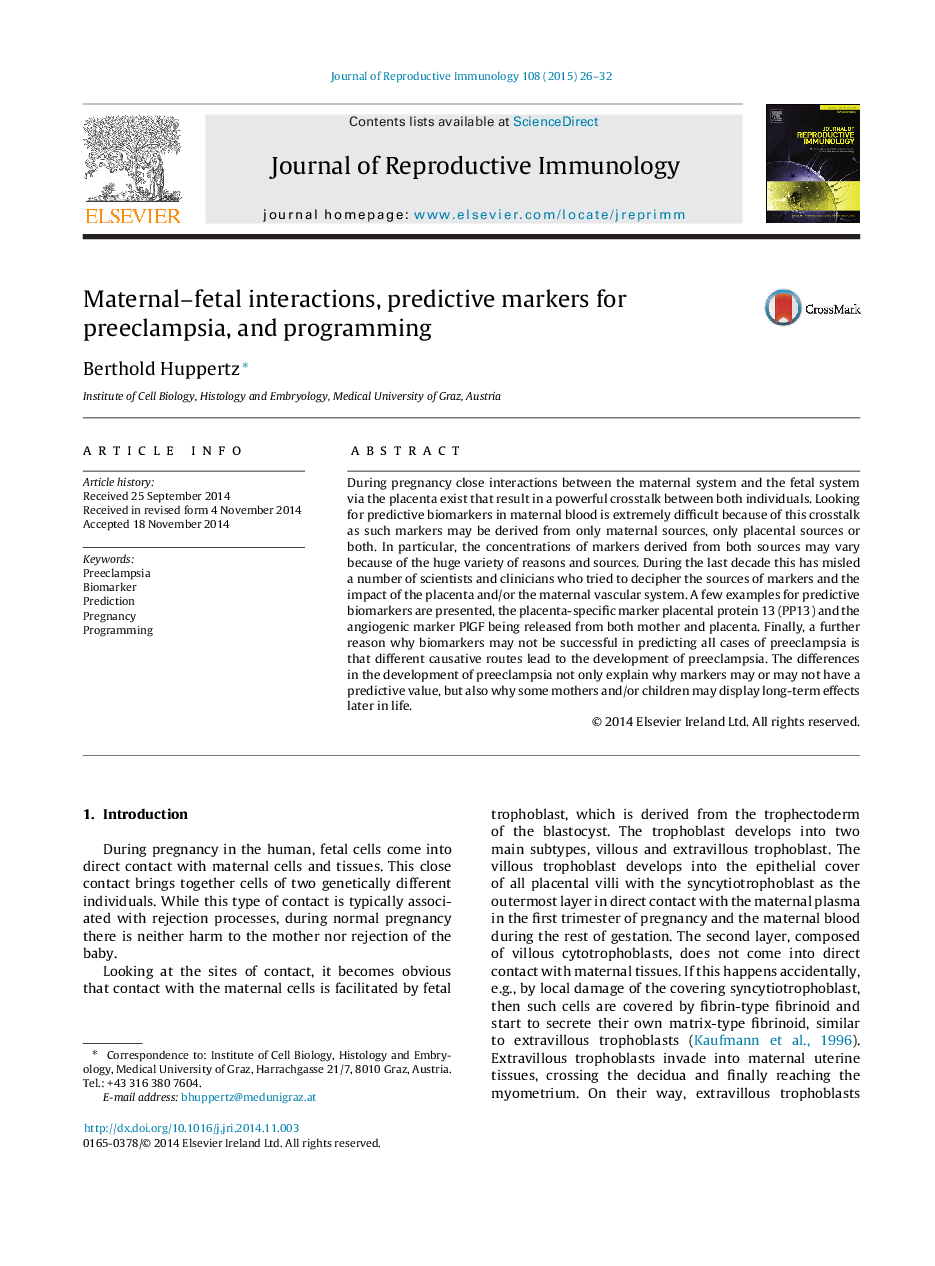| کد مقاله | کد نشریه | سال انتشار | مقاله انگلیسی | نسخه تمام متن |
|---|---|---|---|---|
| 3964582 | 1600704 | 2015 | 7 صفحه PDF | دانلود رایگان |
• Predictive markers for preeclampsia are derived from maternal and fetal sources.
• There is a gap in the understanding of the sources of predictive biomarkers.
• Different causative routes lead to the development of preeclampsia.
• Different preeclampsia types affect the health of mother and child differently later in life.
During pregnancy close interactions between the maternal system and the fetal system via the placenta exist that result in a powerful crosstalk between both individuals. Looking for predictive biomarkers in maternal blood is extremely difficult because of this crosstalk as such markers may be derived from only maternal sources, only placental sources or both. In particular, the concentrations of markers derived from both sources may vary because of the huge variety of reasons and sources. During the last decade this has misled a number of scientists and clinicians who tried to decipher the sources of markers and the impact of the placenta and/or the maternal vascular system. A few examples for predictive biomarkers are presented, the placenta-specific marker placental protein 13 (PP13) and the angiogenic marker PlGF being released from both mother and placenta. Finally, a further reason why biomarkers may not be successful in predicting all cases of preeclampsia is that different causative routes lead to the development of preeclampsia. The differences in the development of preeclampsia not only explain why markers may or may not have a predictive value, but also why some mothers and/or children may display long-term effects later in life.
Journal: Journal of Reproductive Immunology - Volume 108, April 2015, Pages 26–32
